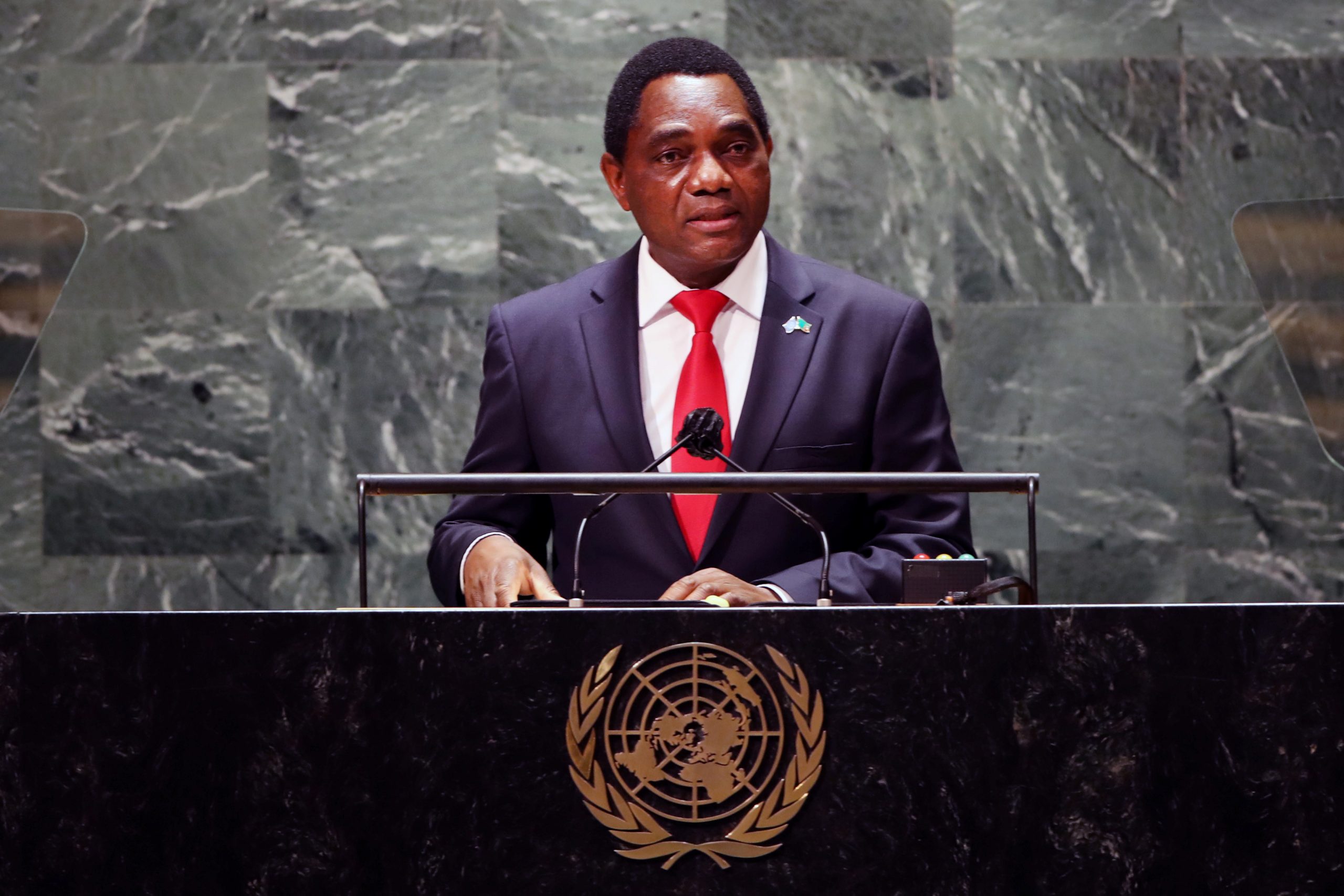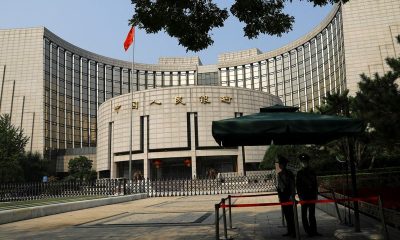Economy
Zambia seals $6.3 billion restructuring in breakthrough for developing nations

Zambia has struck a deal to restructure $6.3 billion in debt owed to other governments, including China, marking a long-awaited breakthrough for indebted nations around the world that have faced lengthy negotiations with creditors.
Zambia in 2020 became the first African country to default on its sovereign debt during the COVID-19 pandemic and struggled since then in protracted discussions to agree a deal.
“Zambia has reached an agreement on a debt treatment with our official creditors – a significant milestone in our journey towards economic recovery & growth,” Zambian President Hakainde Hichilema said on Twitter.
The agreement calls for Zambia’s debt to be rescheduled over more than 20 years with a three-year grace period during which only payments on interest are due. China is the largest official creditor to Zambia.
The debt earmarked for restructuring includes $1.3 billion in arrears, and private sector creditors are expected to do the same on the $6.8 billion owed to them, according to a French official who did not wish to be identified.
Zambia is viewed as a test case for a debt restructuring framework backed by the Group of 20 wealthy nations intended to streamline relief for countries caught in a developing world debt crisis sparked in part by the pandemic.
However, the process has been achingly slow for Zambia, a fact that has discouraged all but a handful of other struggling governments from seeking help under the mechanism.
Beijing was keen not to be seen further holding up debt relief for Zambia at the summit, the French official said, adding that French President Emmanuel Macron’s talks with Chinese authorities in Beijing in April also helped unblock the situation.
Macron said on Twitter the debt restructuring deal was “a historic achievement”.
“We remain mobilised to ensure that other countries caught in debt trap benefit from a multilateral response,” Macron added.
The restructuring agreement with official creditors paves the way for Zambia to receive another $188 million tranche of money from the International Monetary Fund, part of a $1.3 billion package approved in August 2022.
“This agreement paves the way for the completion of the first review of Zambia’s three-year Extended Credit Facility Arrangement, which is helping put Zambia on a path toward sustainable economic growth and poverty reduction,” Kristalina Georgieva, managing director of the International Monetary Fund, said in a written statement.
The scale of the debt relief Zambia requires has been a concern for some of the country’s main creditors.
Some Western officials have accused China – Zambia’s largest bilateral creditor – of dragging its feet in restructuring talks, something Beijing denies.
Of the $6.3 billion in debt owed to government bodies, $4.1 billion was owed specifically to Export-Import Bank of China – which according to analysts underlined the significance of China’s support to the debt relief deal.
“I am pleased that the international community has come together to support Zambia in its time of need,” U.S. Treasury Secretary Janet Yellen said in a statement.
“I urge all official bilateral and private sector creditors to quickly finalise the debt restructuring process that will provide relief to Zambian families and encourage the private investment that is needed to jump start the economy.”
Zambia’s Hichilema was one of about 40 leaders attending a summit in France on Thursday and Friday aimed at easing the debt burden on some of the world’s most vulnerable countries while freeing up billions of dollars in new funds for climate finance.
Zambia’s international bonds broadly traded flat on Friday but have rallied in recent months, with the 2024 issue hitting a nine month high in early trade.
Economy
Russian central bank says it needs months to make sure CPI falling before rate cuts -RBC


© Reuters. Russian Central Bank Governor Elvira Nabiullina attends a news conference in Moscow, Russia June 14, 2019. REUTERS/Shamil Zhumatov/File Photo
MOSCOW (Reuters) – Russia’s central bank will need two to three months to make sure that inflation is steadily declining before taking any decision on interest rate cuts, the bank’s governor Elvira Nabiullina told RBC media on Sunday.
The central bank raised its key interest rate by 100 basis points to 16% earlier in December, hiking for the fifth consecutive meeting in response to stubborn inflation, and suggested that its tightening cycle was nearly over.
Nabiullina said it was not yet clear when exactly the regulator would start cutting rates, however.
“We really need to make sure that inflation is steadily decreasing, that these are not one-off factors that can affect the rate of price growth in a particular month,” she said.
Nabiullina said the bank was taking into account a wide range of indicators but primarily those that “characterize the stability of inflation”.
“This will take two or three months or more – it depends on how much the wide range of indicators that characterize sustainable inflation declines,” she said.
The bank will next convene to set its benchmark rate on Feb. 16.
The governor also said the bank should have started monetary policy tightening earlier than in July, when it embarked on the rate-hiking cycle.
Economy
China identifies second set of projects in $140 billion spending plan


© Reuters. FILE PHOTO: Workers walk past an under-construction area with completed office towers in the background, in Shenzhen’s Qianhai new district, Guangdong province, China August 25, 2023. REUTERS/David Kirton/File Photo
SHANGHAI (Reuters) – China’s top planning body said on Saturday it had identified a second batch of public investment projects, including flood control and disaster relief programmes, under a bond issuance and investment plan announced in October to boost the economy.
With the latest tranche, China has now earmarked more than 800 billion yuan of its 1 trillion yuan ($140 billion) in additional government bond issuance in the fourth quarter, as it focuses on fiscal steps to shore up the flagging economy.
The National Development and Reform Commission (NDRC) said in a statement on Saturday it had identified 9,600 projects with planned investment of more than 560 billion yuan.
China’s economy, the world’s second largest, is struggling to regain its footing post-COVID-19 as policymakers grapple with tepid consumer demand, weak exports, falling foreign investment and a deepening real estate crisis.
The 1 trillion yuan in additional bond issuance will widen China’s 2023 budget deficit ratio to around 3.8 percent from 3 percent, the state-run Xinhua news agency has said.
“Construction of the projects will improve China’s flood control system, emergency response mechanism and disaster relief capabilities, and better protect people’s lives and property, so it is very significant,” the NDRC said.
The agency said it will coordinate with other government bodies to make sure that funds are allocated speedily for investment and that high standards of quality are maintained in project construction.
($1 = 7.1315 renminbi)
Economy
Russian central bank says it needs months to make sure CPI falling before rate cuts -RBC


© Reuters. Russian Central Bank Governor Elvira Nabiullina attends a news conference in Moscow, Russia June 14, 2019. REUTERS/Shamil Zhumatov/File Photo
MOSCOW (Reuters) – Russia’s central bank will need two to three months to make sure that inflation is steadily declining before taking any decision on interest rate cuts, the bank’s governor Elvira Nabiullina told RBC media on Sunday.
The central bank raised its key interest rate by 100 basis points to 16% earlier in December, hiking for the fifth consecutive meeting in response to stubborn inflation, and suggested that its tightening cycle was nearly over.
Nabiullina said it was not yet clear when exactly the regulator would start cutting rates, however.
“We really need to make sure that inflation is steadily decreasing, that these are not one-off factors that can affect the rate of price growth in a particular month,” she said.
Nabiullina said the bank was taking into account a wide range of indicators but primarily those that “characterize the stability of inflation”.
“This will take two or three months or more – it depends on how much the wide range of indicators that characterize sustainable inflation declines,” she said.
The bank will next convene to set its benchmark rate on Feb. 16.
The governor also said the bank should have started monetary policy tightening earlier than in July, when it embarked on the rate-hiking cycle.

 Forex3 years ago
Forex3 years agoForex Today: the dollar is gaining strength amid gloomy sentiment at the start of the Fed’s week

 Forex3 years ago
Forex3 years agoUnbiased review of Pocket Option broker

 Forex3 years ago
Forex3 years agoDollar to pound sterling exchange rate today: Pound plummeted to its lowest since 1985

 Forex3 years ago
Forex3 years agoHow is the Australian dollar doing today?

 Cryptocurrency3 years ago
Cryptocurrency3 years agoWhat happened in the crypto market – current events today

 World3 years ago
World3 years agoWhy are modern video games an art form?

 Commodities3 years ago
Commodities3 years agoCopper continues to fall in price on expectations of lower demand in China

 Economy3 years ago
Economy3 years agoCrude oil tankers double in price due to EU anti-Russian sanctions























